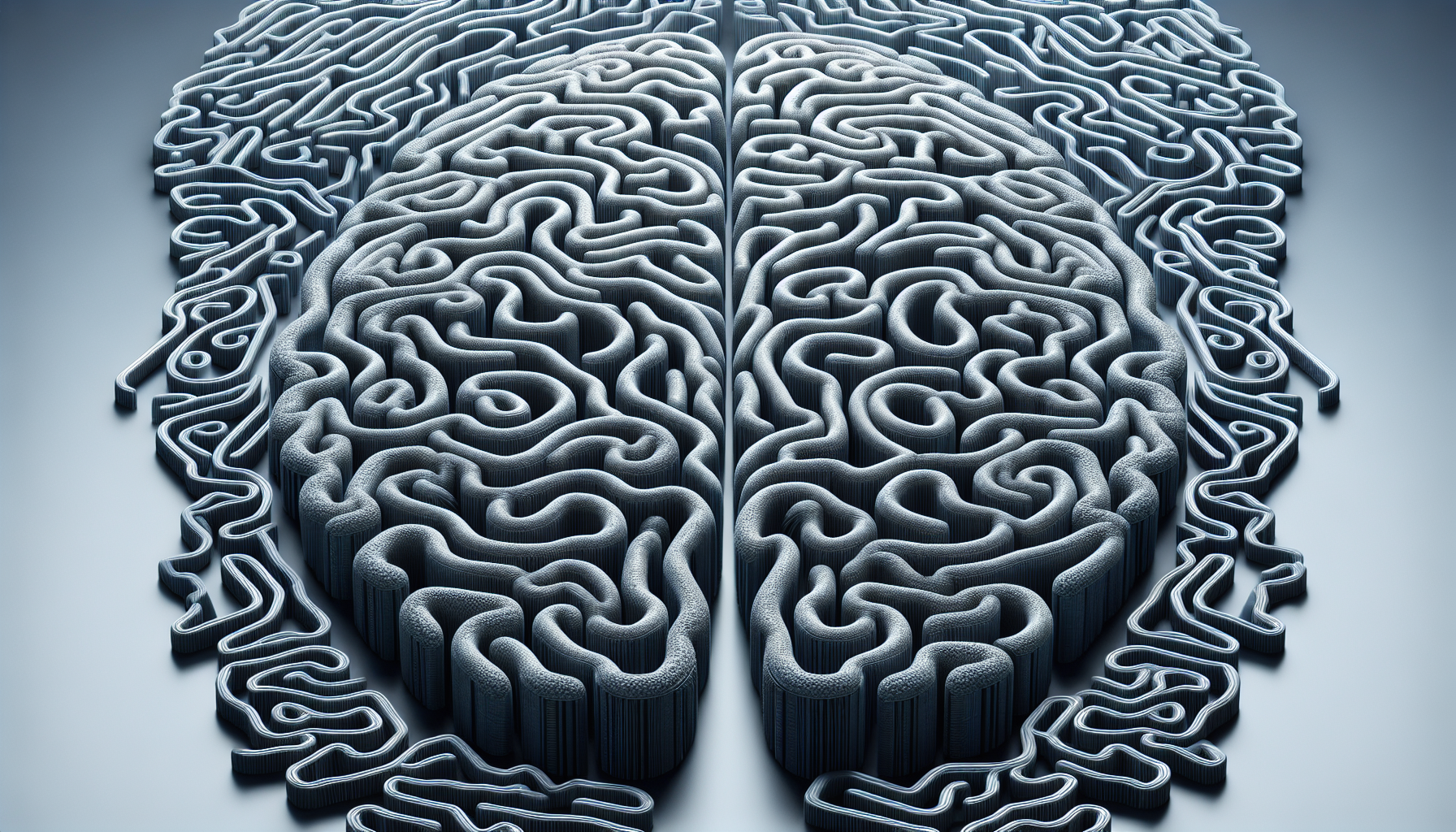Mastering the Science of Habits: Break Free and Build a Better You
Habits are the invisible architects of our lives, silently shaping our days, decisions, and destinies. Whether it’s reaching for a cookie when stressed, hitting snooze for the fifth time, or automatically lacing up running shoes each morning, habits operate in the background of our minds. But what if you could hack this hidden system? By understanding the science of habits, you can break free from destructive patterns and design behaviors that align with your goals. This guide dives into the neuroscience of habit loops, actionable strategies for breaking bad habits, and science-backed methods for establishing positive behaviors that stick. Let’s explore how to rewire your brain and transform your life—one habit at a time.
The Neuroscience of Habits: How Your Brain Builds Autopilot
The Habit Loop: Cue, Routine, Reward
At the core of every habit lies a three-step cycle known as the habit loop15. Imagine this: Your phone buzzes (cue), you instinctively scroll through social media (routine), and feel a fleeting dopamine hit (reward). Over time, this loop becomes so ingrained that your brain’s basal ganglia—the region responsible for automatic behaviors—takes over, bypassing conscious decision-making512.
This process, called “chunking,” allows the brain to conserve energy by turning repetitive actions into effortless routines1. While this efficiency helped our ancestors survive, it also means that bad habits, once formed, linger in neural pathways like well-worn trails13. The good news? Neuroplasticity—the brain’s ability to rewire itself—means new trails can be carved with intentional practice12.
Why Bad Habits Stick (And How to Loosen Their Grip)
Bad habits persist because they’re reinforced by powerful rewards, even if those rewards are short-lived. For example, stress-eating temporarily soothes anxiety, creating a craving that overrides logic513. Worse, the brain struggles to distinguish between helpful and harmful habits—it just knows what’s familiar1.
To disrupt this cycle, you must first identify the cue and reward driving the habit37. Let’s say you snack nightly while watching TV. The cue might be boredom, the routine is eating, and the reward is sensory stimulation. Replace the routine (snacking) with a healthier behavior (knitting or chewing gum) that satisfies the same reward, and the habit loop begins to shift310.
Breaking Bad Habits: A Step-by-Step Playbook
Step 1: Map Your Triggers
Every habit starts with a trigger. Common cues include:
- Emotional states (stress, boredom, loneliness)
- Environmental cues (a couch, a specific time of day)
- Social situations (meeting friends at a bar)
Track your habits for a week using a journal or app to pinpoint patterns1013. For instance, if afternoon fatigue triggers a coffee-and-cookie run, note the time, location, and emotions involved. Awareness alone can weaken a habit’s hold by bringing it into conscious thought710.
Step 2: Disrupt and Replace
Once you’ve identified the trigger, engineer friction for bad habits and ease for good ones. If social media distracts you during work:
- Delete apps from your phone (friction).
- Place a book on your desk (easier access to a better habit)1015.
Replacement is key. Research shows substituting a negative routine with a positive one—like swapping cigarette breaks with breathing exercises—is far more effective than sheer willpower37. For example, a study on Vietnam War veterans found that those who returned to drug-free environments were far more likely to stay sober, proving the power of context210.
Step 3: Reframe Your Environment
Your surroundings silently steer your behavior. To quit late-night snacking:
Even subtle changes, like moving your alarm clock across the room, can disrupt autopilot routines3. Remember, you’re not weak—your environment is strong. Reshape it to support your goals.
Building Positive Habits: Small Wins, Big Transformations
Start Microscopic (Yes, Really)
Ambition often backfires. Instead of vowing to “exercise daily,” commit to two minutes of stretching. Why? Tiny habits reduce resistance and build momentum615. James Clear, author of Atomic Habits, calls this the “Two-Minute Rule”—starting with a behavior so easy it’s impossible to skip6. Over time, these micro-habits expand naturally.
Stack Habits Like LEGO Bricks
Link new habits to existing ones using habit stacking6. For example:
- After brushing your teeth (existing habit), meditate for one minute (new habit).
- After pouring morning coffee, write one gratitude note.
This method leverages the brain’s love for patterns, anchoring new routines to established ones615.
Reward the Process, Not the Outcome
Celebrate showing up, not just results. Did you meditate for 60 seconds? That’s a win. Rewards like a favorite song or a quick dance party release dopamine, reinforcing the habit loop610. Over time, the habit itself becomes the reward—a phenomenon seen in marathon runners who grow to crave the “runner’s high”15.
The Mindset Shift: From Struggle to Strategy
Embrace Identity-Based Change
Habits thrive when tied to self-image. Instead of “I need to run,” adopt the identity: “I’m a runner.” Each small action reinforces this identity, making consistency easier15. As Charles Duhigg notes in The Power of Habit, belief in change is the ultimate catalyst1.
Build a Support Squad
Willpower is finite; community is fuel. Share your goals with friends, join a fitness class, or partner with an accountability buddy. Studies show that social support doubles the likelihood of habit success813. Apps like Habitica gamify progress, turning habit-building into a team sport6.
When to Seek Professional Help
Some habits—like addiction or chronic procrastination—may require expert guidance. Cognitive-behavioral therapy (CBT) helps reframe thought patterns, while coaches provide tailored strategies48. Remember, asking for help isn’t failure—it’s a strategic upgrade.
Conclusion: Your Habits, Your Future
Mastering habits isn’t about perfection; it’s about progression. Each time you choose a healthy snack over chips or a walk over scrolling, you’re voting for the person you want to become. The science of habits reveals that small, consistent changes compound into transformative results.
Ready to accelerate your growth? AIDX combines AI-driven insights with human empathy to help you break barriers and build lasting change. Start your journey today with web chat or Telegram. Your future self will thank you.
By leveraging the habit loop, optimizing your environment, and embracing incremental progress, you’re not just changing behaviors—you’re redesigning your life. The power to break free and build better is within you. Let’s get started.
References
- https://fs.blog/everything-you-need-to-know-about-habits-the-science-of-habit-formation-and-change/
- https://jamesclear.com/habits
- https://www.heart.org/en/healthy-living/healthy-lifestyle/mental-health-and-wellbeing/how-to-break-bad-habits-and-change-behaviors
- https://xceptionallearning.com/psychology/psychology-for-personal-growth-and-self-improvement/
- https://www.habitbehavioralhealth.com/blog-articles/the-science-of-habit-formation
- https://blog.venturemagazine.net/the-science-of-habit-formation-a-guide-to-building-better-habits-for-lasting-success-d3a3fa3b1ad4
- https://www.secondnature.io/us/guides/mind/habit-change/break-bad-habits
- https://quenza.com/blog/knowledge-base/behavior-change-outcomes/
- https://bookpal.com/blog/mastering-habits-science-backed-tips-from-expert-authors/
- https://www.upskillist.com/blog/7-science-based-ways-to-break-bad-habits/
- https://inblog.ai/blog/blog-SEO
- https://www.brainfirstinstitute.com/blog/unlocking-habit-mastery-the-neuroscience-behind-lasting-change
- https://www.schooltube.com/why-bad-habits-die-hard-the-science-of-routine-behavior-and-your-brain/
- https://writeme.ai/blog/how-does-blogging-help-seo/
- https://wearechief.com/blogs/articles/science-backed-guide-to-building-a-habit
Disclaimer: The content of this post is generated by Aidx, the AI entity. It does not necessarily represent the views of the company behind Aidx. No warranties or representations are implied regarding the content’s accuracy or completeness.



